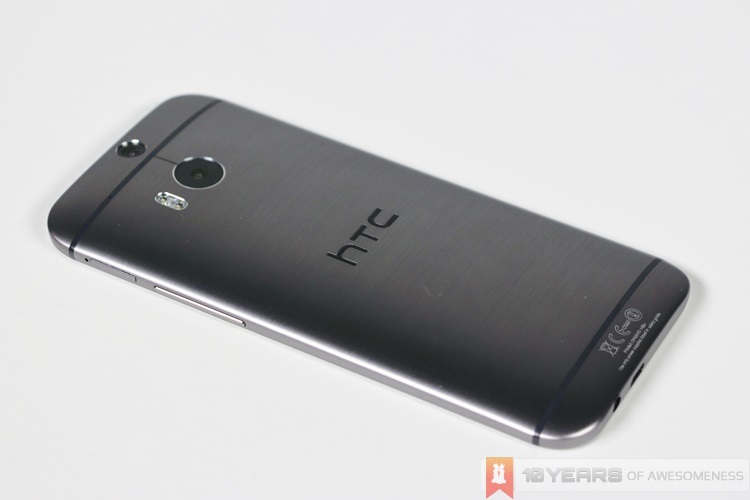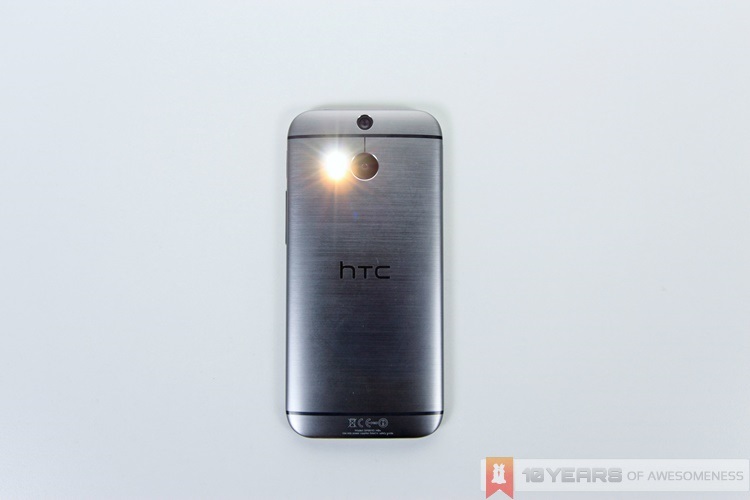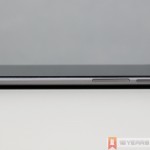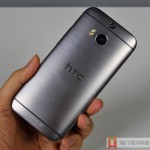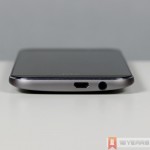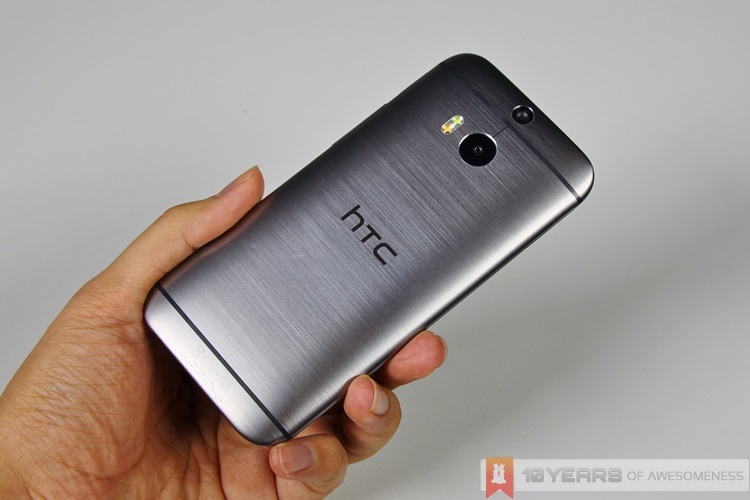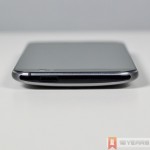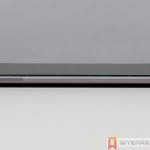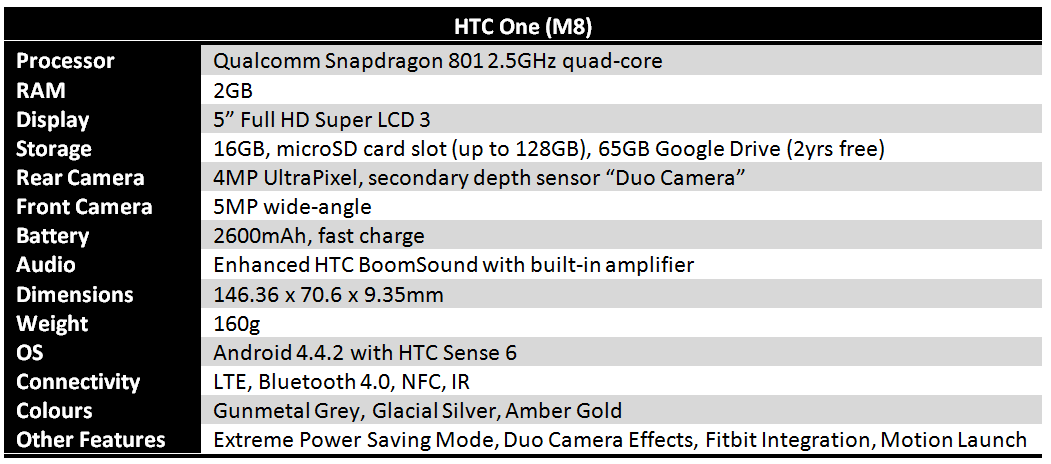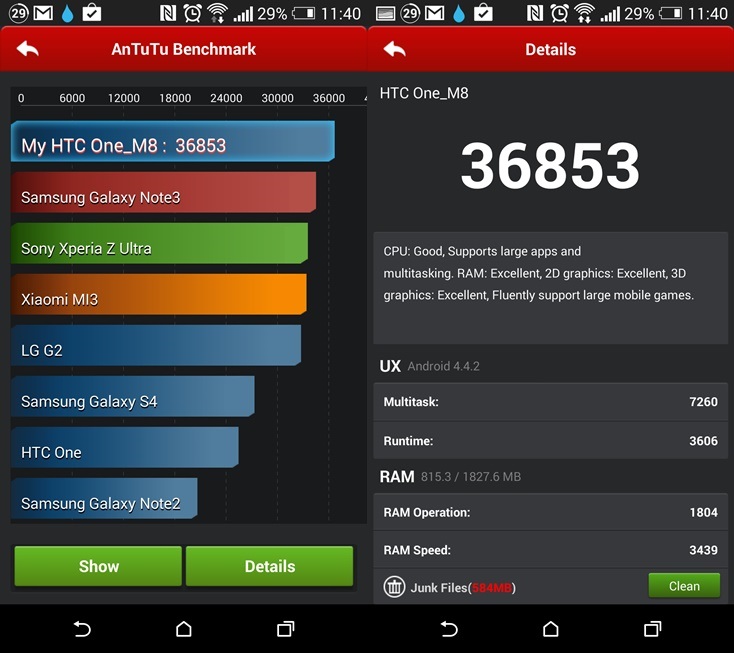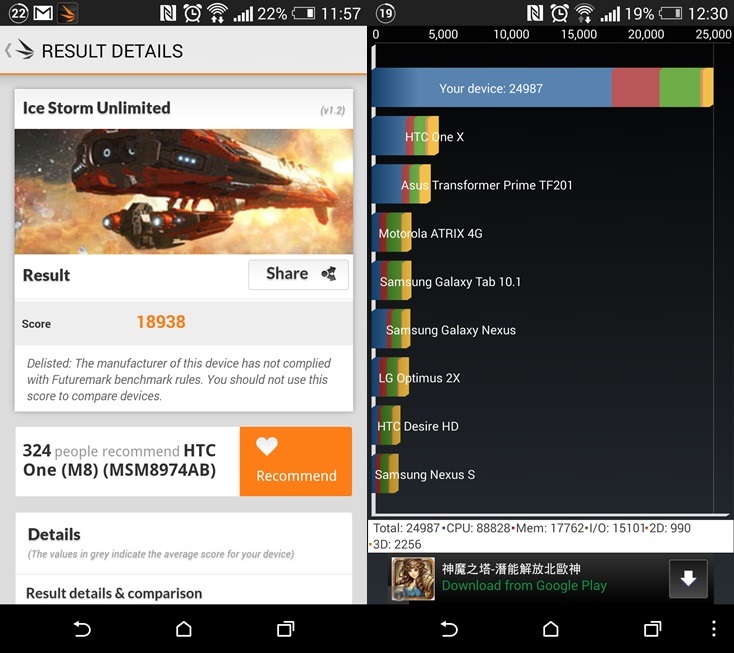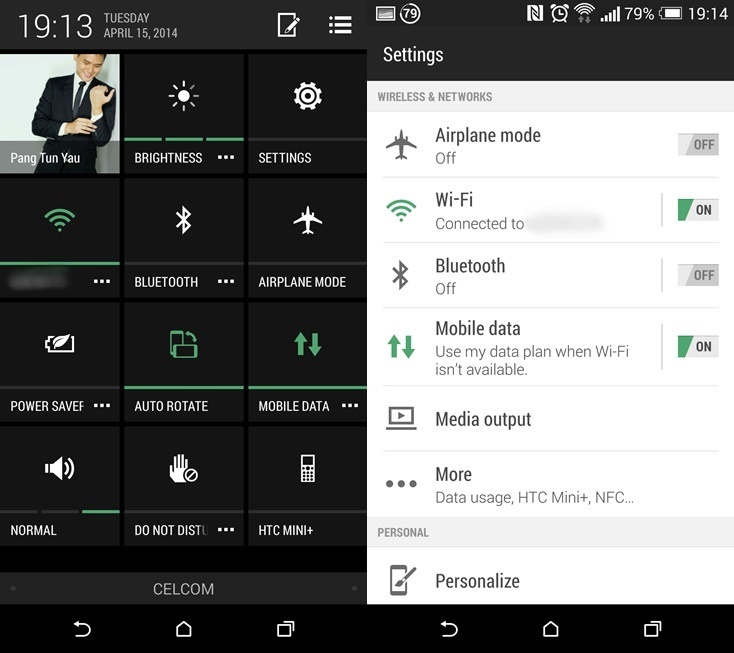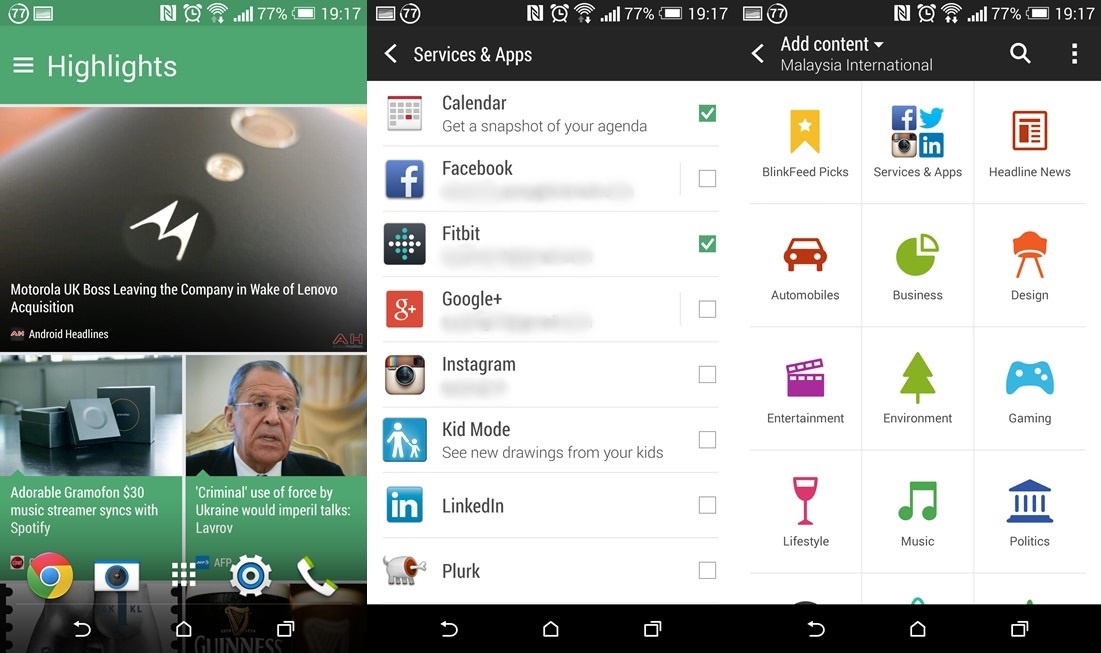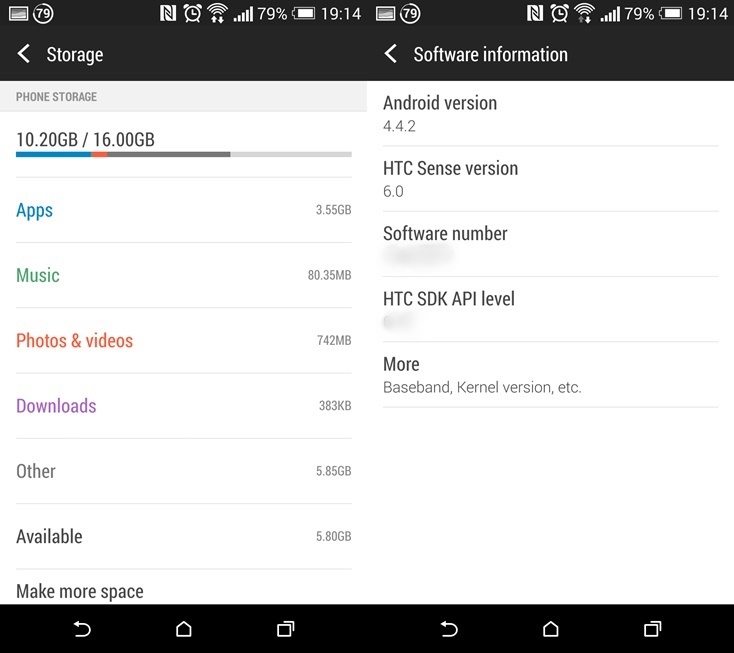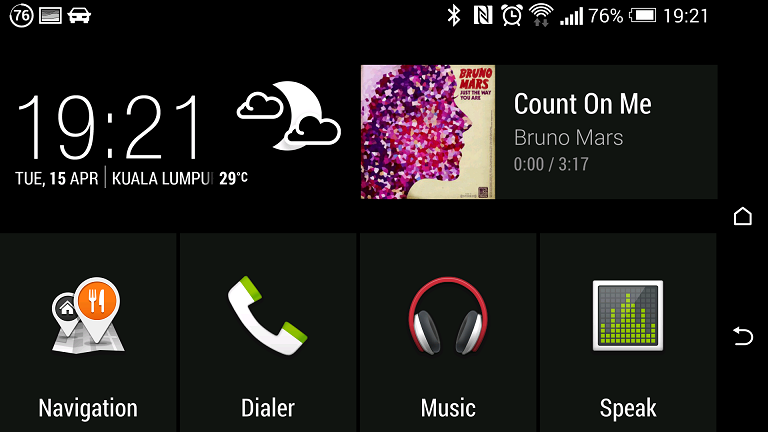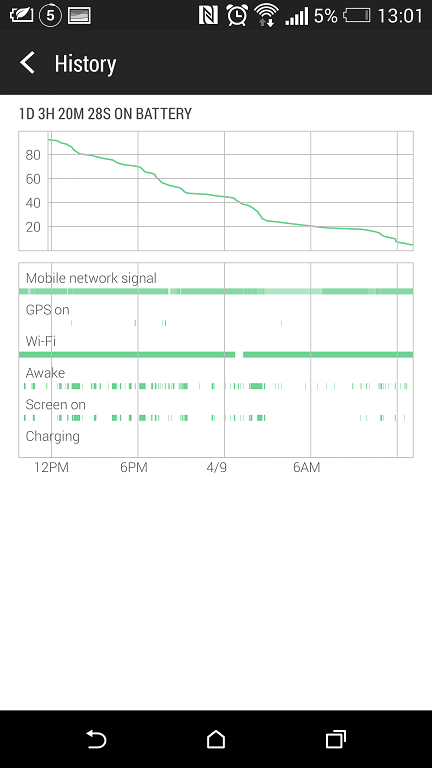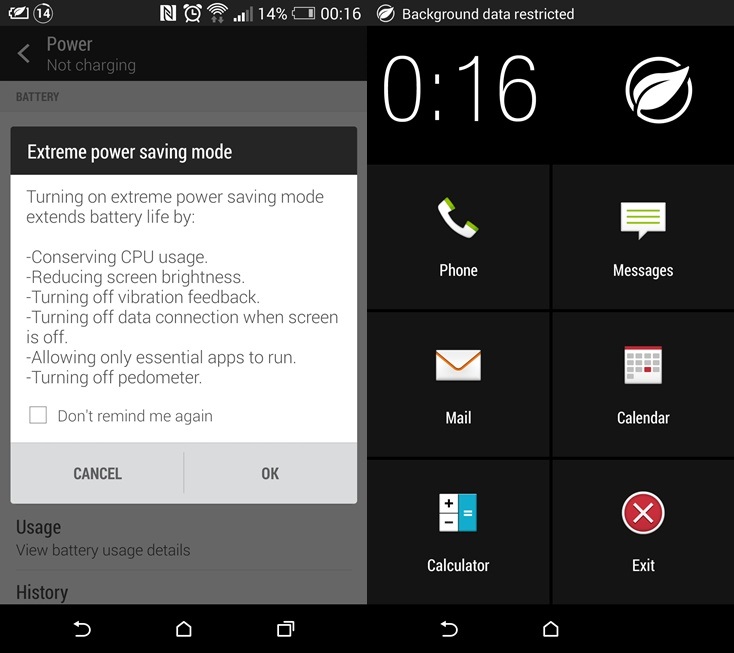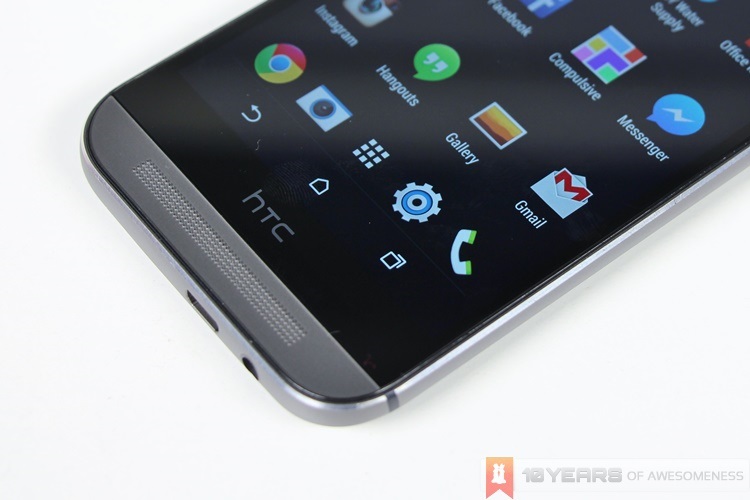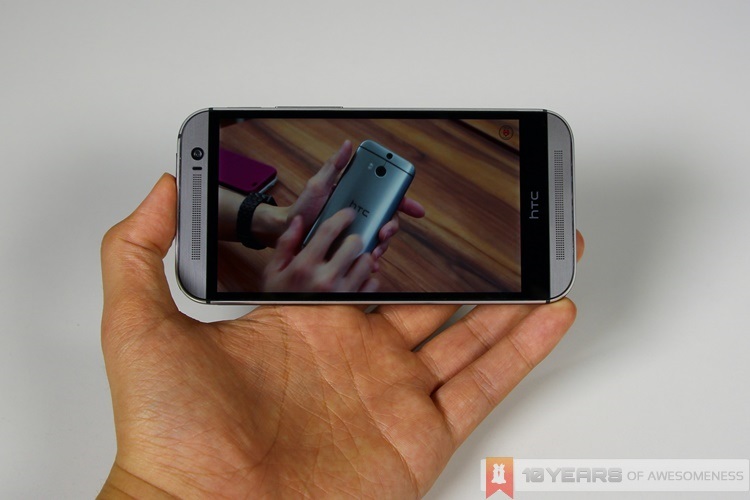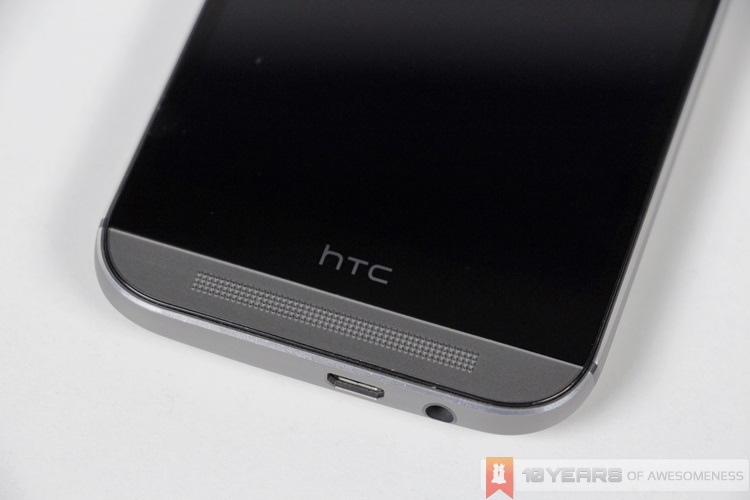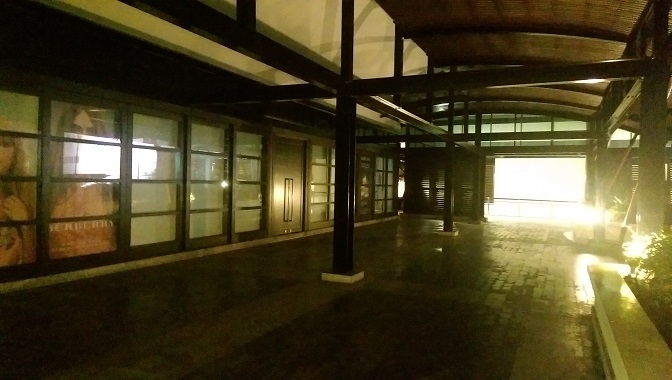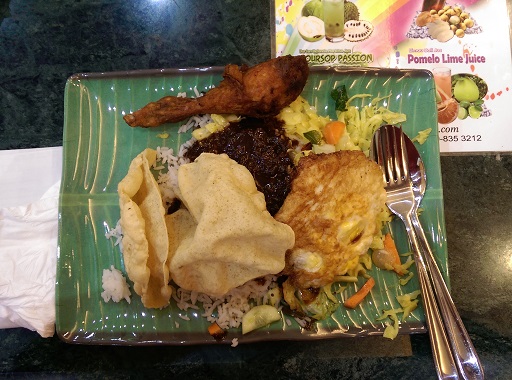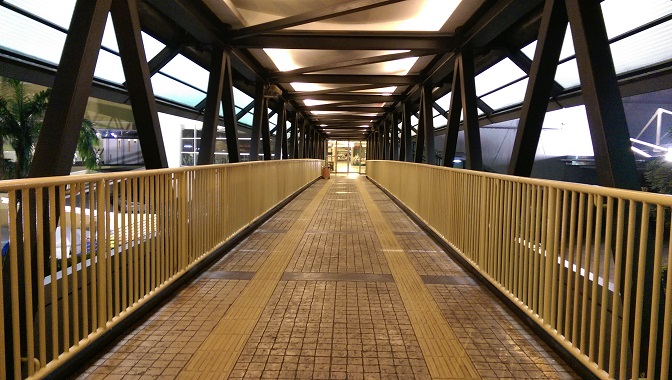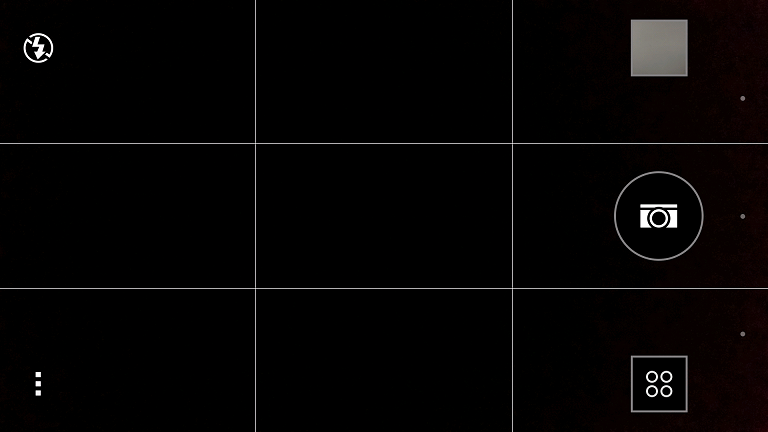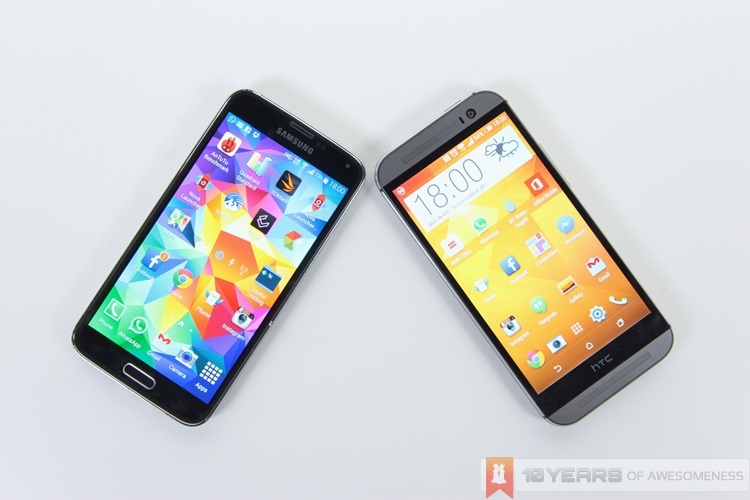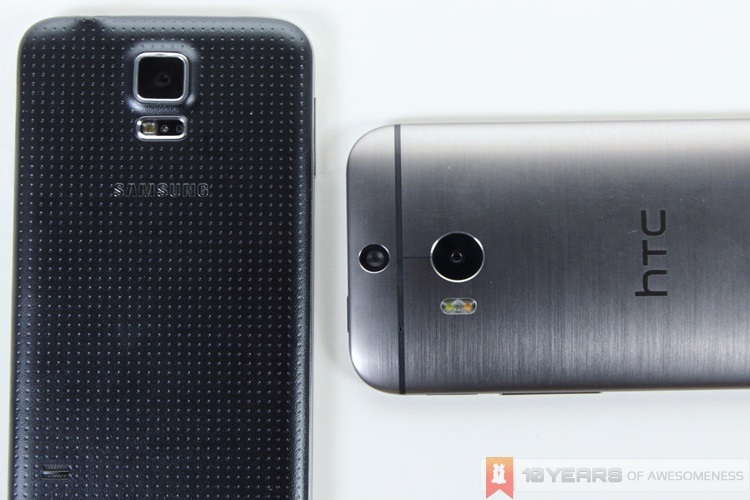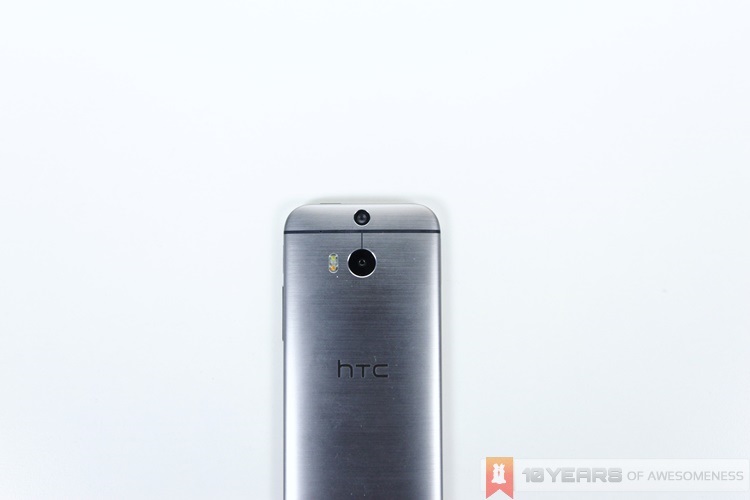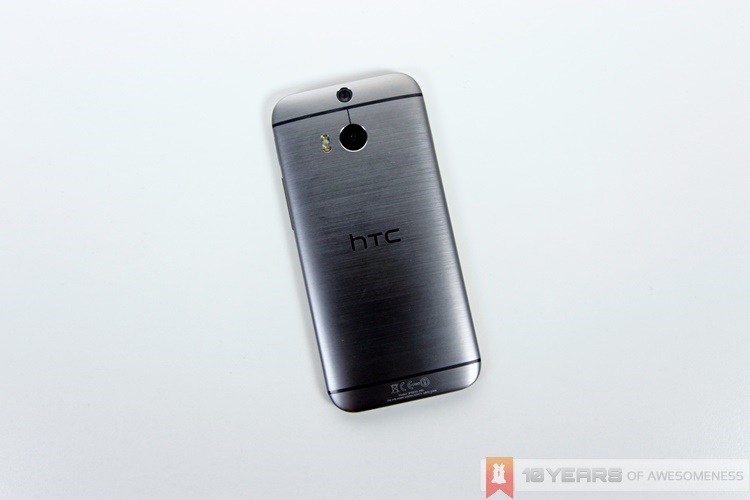Over the weekend, I watched a football match. It was a match between a team that’s had an illustrious past but has fallen off considerably from the heady heights it once called home, against another team who are in the business of buying success. This latter team is widely considered the antithesis of what football stands for; that hard work and tenacity paired with technique and finesse will win you the game.

Over the past two weekends I had also been using the new HTC One (M8). As the game progressed, I realized there were some interesting parallels between the fortunes of HTC with the first team: an entity that was used to being successful, which then endured years of being in the shadows, and is now on the cusp of a renaissance. With a brand new, refined and undeniably handsome flagship smartphone in tow, could HTC mark the start of a resurgence with its latest flagship, the HTC One (M8)? Let’s find out.
First Impressions
If you’ve read our hands-on preview of the HTC One (M8), you’ll know exactly how I feel about the new flagship smartphone from HTC. This device just begs to be taken out and used in public. The One doesn’t just attract attention, it demands it. It is such a handsome device, with its all-metal body, hairline brush finish coupled with beautifully curved and tapered edges that make it arguably the best designed smartphone we’ve ever seen. Period.
Being one of the few metal-clad smartphones around, the HTC One (M8) also provides one of the best build qualities that you can find in a smartphone these days. I’ve (accidentally) dropped it twice now, and one even from my height onto a carpet floor, but the device brushed it off both times without even a scratch.
There are, however, some down sides to using a thin metal smartphone. Firstly, the back can get a little slippery, which combined with the tapered edges can result in some clumsy dropping of the phone – especially when you’re using it while lying in bed. Secondly, using any GPS navigation device for anything longer than 20 minutes will make the phone really hot to the touch.
Hardware
Benchmarks
Software
HTC’s new Sense 6, we’re told, has had a redesign from the ground up. It’s flatter, has a new font, and a new set of icons. For the most part, Sense 6 is clean, uncluttered and does not offer anything that Google already offers. In fact, this may just be the Android skin that is easiest on the eyes and on the hardware.
BlinkFeed is now permanently situated to the right of the homescreen, and it is now a lot more customizable to show only your favourite content. You can customize your BlinkFeed to show feeds from not only your favourite sites, but also pull in updates from Facebook, Twitter, Instagram, LinkedIn and other social media platforms. Best of all, BlinkFeed also pulls in calendar entries as well as tips and tricks, making it a very useful tool for glancing in and out when you’ve got only two minutes to spare.
One major difference on Sense 6 is the fact that most HTC apps are now individually available on the Google Play Store. From the HTC Transfer Tool, HTC Zoe to the excellent HTC SenseTV, uploading these apps to the Play Store allows HTC to increase the efficiency of updating these apps. HTC can then push an update to, say, SenseTV immediately instead of compiling them all to a large OTA update weeks or even months after they’re ready. It is a strategy first used by Motorola to avoid lengthy update delays by carriers, and one that is almost certain to be adopted by other manufacturers in the future – as HTC has done here.
One of the features I liked a lot from Samsung phones is its built-in pedometer, which tracks how many steps I take in a day. For someone who spends most of his days in front of a laptop, quantifying the number of steps taken in a day is a pretty useful thing. On the HTC One (M8), the Fitbit app is pre-installed, allowing you to sync your daily activities with the company’s fitness bands, or using the device’s sensors itself.
Just like S Health on Samsung’s Galaxy devices, the HTC One (M8) with Fitbit will track your footsteps and distance, as well as an estimate of the calories burned. If you set up a food plan, and also preprared to include the amount of water you drink per day, there’s a pretty holistic health app in Fitbit – if anyone is interested.
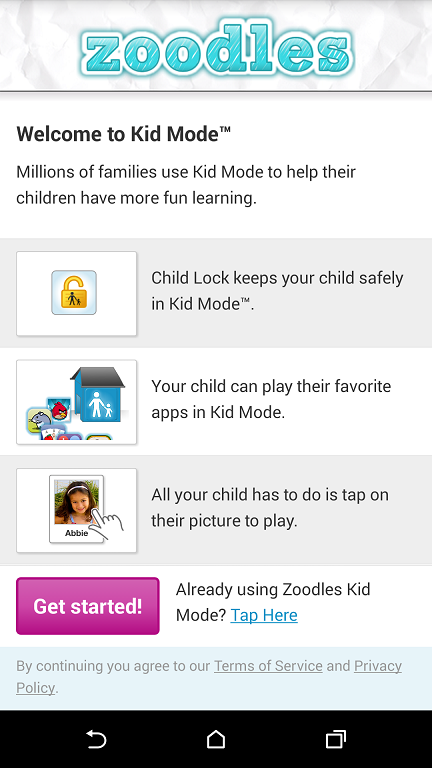 There’s a Kid Mode on Sense 6, too.
There’s a Kid Mode on Sense 6, too.
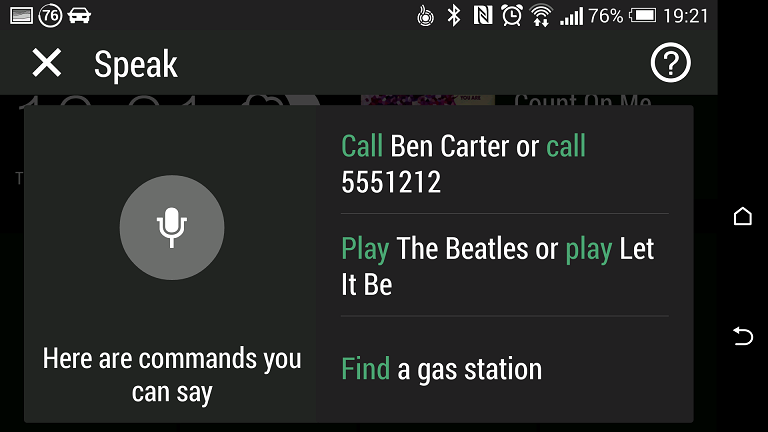 The HTC Car app simplifies the layout with large icons to apps that you’d use the most for driving, and even has voice command support.
The HTC Car app simplifies the layout with large icons to apps that you’d use the most for driving, and even has voice command support.
Finally, there’s Motion Launch. It utilizes the device’s sensors to ease the user into navigating their One (M8) swiftly into anything they need. Just one swipe gesture and you can easily slip straight into BlinkFeed, your last used app or even the camera without having to go through the process of unlocking your phone.
Best of all is the ability to wake the phone with a simple double-tap on the screen. It is easily the most overlooked feature on Android smartphones, and is much more appreciated here simply because HTC chose to retain the position of the power button right at the top of the device. It’s wildly annoying and inconvenient, to say the least.
Battery Life
HTC fitted a 2600mAh non-removable battery into the new HTC One (M8). On paper, that’s the same capacity Samsung fitted into last year’s Galaxy S4. The Galaxy S5 sports a 2800mAh battery, with two power saving modes: one normal, and an “Ultra” version. Surely HTC is out of their minds for putting in such a small battery into its flagship smartphone?
Turns out, they weren’t. The battery life on the new HTC One (M8) is not just fantastic, HTC also has included some nifty additions to the battery aspect of its flagship device. For starters, I consistently managed over a day’s worth of use on the HTC One, usually having about 20-30% battery after a standard day in the office (WiFi and occasional 3G, lots of instant messaging, emails, and the occasional quick game).
On top of that, Power Saver Mode automatically kicks in when your device hits 20% battery, while HTC also has an Extreme Power Saving Mode. Yup, Samsung’s got ultra, and HTC’s got extreme. They both work the same way where the CPU is throttled, unnecessary sensors switched off, and limiting only a certain number of apps to work in that mode. Samsung’s solution is actually better, as it allows you to customize which apps can be used in that mode; HTC only limits you to use its own Mail app (not Gmail), SMS, phone, calendar and calculator. That’s it.
Finally, HTC’s got one final ace up its sleeve in power management: the battery on the HTC One (M8) supports fast charging, allowing it to charge from 0-80% in just one hour. That is certainly a bold claim, and one I’ve not been able to replicate. At best I was able to charge from about 3% to 100% in just under three hours – which is still a pretty good time.
Display
Last year, HTC made a bold move to not follow the pack and increase its flagship phone’s display to five inches. This time, they’ve made the jump to that territory, only to see the competition further increase their screen sizes. It probably wouldn’t matter again, since the difference is now limited to just 0.1 inches with the Galaxy S5 and 0.2 inches with the Xperia Z2, but what’s more important is this: the Super LCD 3 display remains one of the best quality displays for smartphones.
Blacks are satisfyingly deep to the point where you virtually cannot see where the screen ends and the bezel begins. Colours give good contrast without bordering on being over-saturated, which is a common issue with AMOLED screens. Viewing angles are spectacular too; you see accurate colours at virtually any angle.
The One’s 5-inch Full HD display also pairs wonderfully with the BoomSound speakers as a portable entertainment device.
Audio
It was already great last year, and it’s even better this time round. According to HTC, the new One sports a brand new speaker system and amplifiers, making them 25% louder, with richer and punchier sound across all spectrum and a focus on vocal clips. It effortlessly fills an empty room with music that is not only loud, but also true.
Camera
And so we come to the biggest point of contention for the HTC One (M8): the rear camera. HTC claims that this time round, there’s a new UltraPixel sensor which does away with that annoying purple tint issue that plagued the previous flagship, and with the new depth sensor (which together forms what HTC calls Duo Camera) this year’s camera will finally live up to the hype that HTC was willing to put its reputation on the line for. Twice.
It doesn’t.
As before, images are still washed out, and bright sources of light in the frame flare or bleed out in a way that just does not reflect the actual scene. And worse, it happens both in good and low-light conditions.
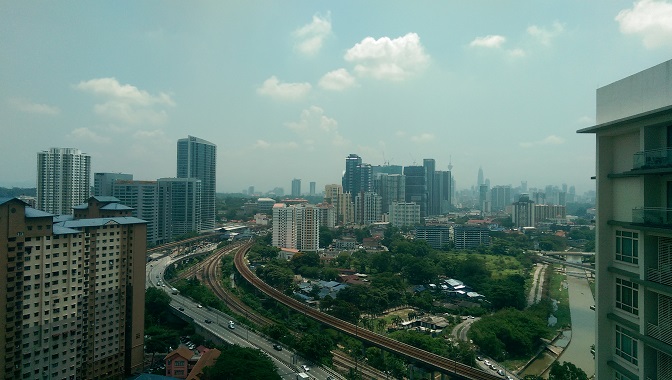 This strangely cool tint has appeared twice now, both in our earlier camera test with the Galaxy S5 and again here.
This strangely cool tint has appeared twice now, both in our earlier camera test with the Galaxy S5 and again here.
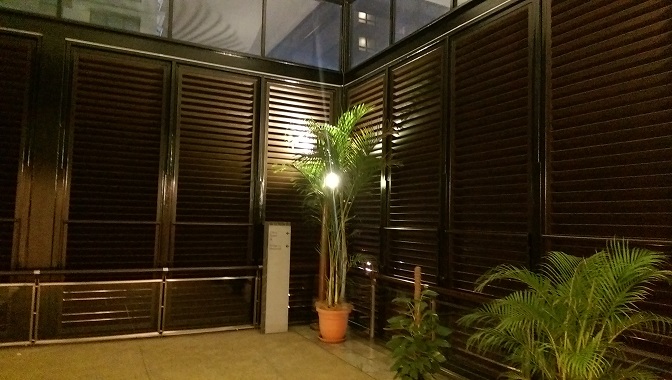 The low resolving power of the UltraPixel camera is evident here, as the text on the light grey board is completely unreadable, even when zoomed in.
The low resolving power of the UltraPixel camera is evident here, as the text on the light grey board is completely unreadable, even when zoomed in.
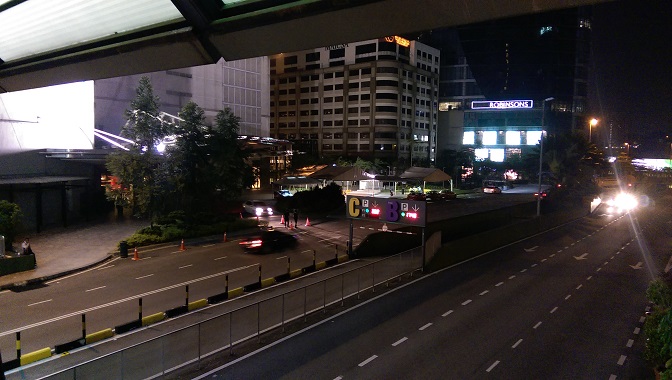 You’ll need to set your white balance a little to achieve this realistic night view, as the UltraPixel sensor always over-exposes low-light scenes.
You’ll need to set your white balance a little to achieve this realistic night view, as the UltraPixel sensor always over-exposes low-light scenes.
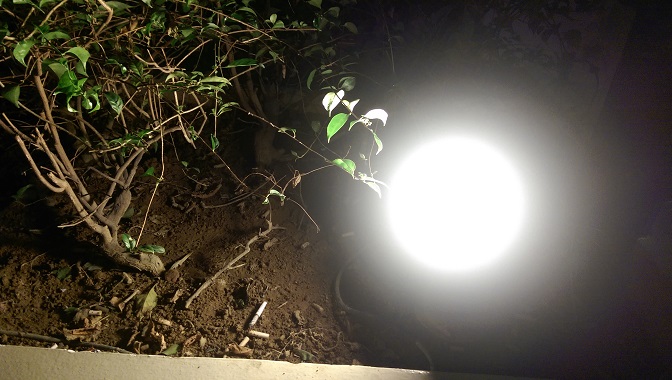 One of the rare occasions the UltraPixel sensor captured the colours correctly, as can be seen with the green leaves.
One of the rare occasions the UltraPixel sensor captured the colours correctly, as can be seen with the green leaves.
That’s before we even mention the resolving power of the sensor. Because the individual pixels are much larger than normal, the sensor itself totals a meagre 4MP. As a result, images shot on the HTC One are only fit for social media sharing and nothing more. The low resolution really counts against the One, both in close-up and landscape shots.
And that’s really a pity, because with the new depth sensor, this smartphone is capable of some pretty cool things. Sure, they can be considered as gimmicks, but the UFocus feature really stands out above the rest. A common theme among 2014 Android smartphones, UFocus allows you to refocus an image after it has been taken. While the other Android smartphones (and Nokia’s Refocus app) all lets you do the same thing without a secondary depth sensor, UFocus wins hands down both in its ease of use and resulting images.
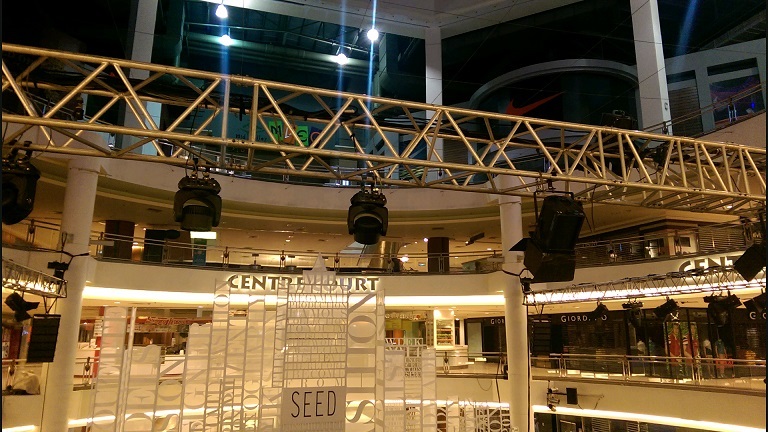 Original image as seen in the Gallery app
Original image as seen in the Gallery app
 Select Edit, tap on UFocus, and you’ll be prompted to select where you’d like the image to be re-focused
Select Edit, tap on UFocus, and you’ll be prompted to select where you’d like the image to be re-focused
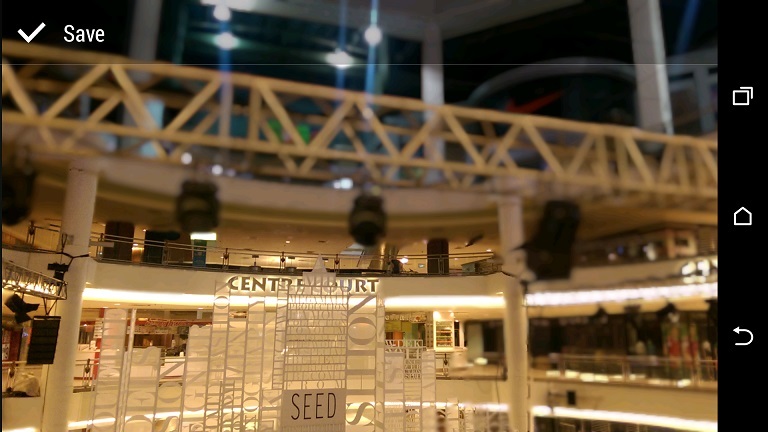 Focus on “SEED” at the rear of the image
Focus on “SEED” at the rear of the image
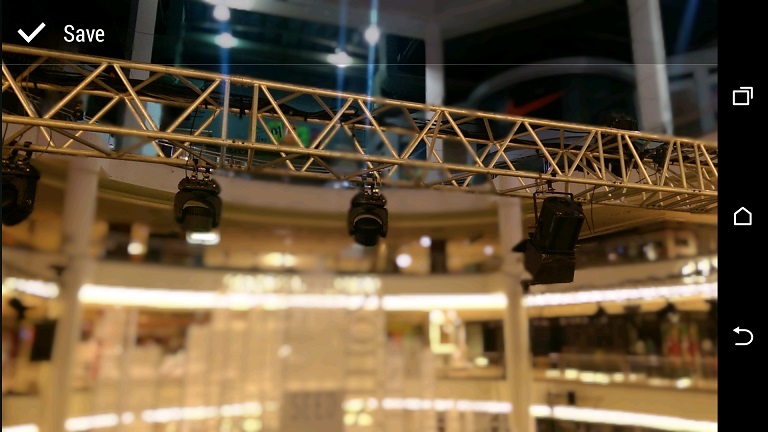 Focus on the middle spotlight at the front of the image
Focus on the middle spotlight at the front of the image
With the exception of Nokia’s Refocus, only UFocus allows users to tap anywhere on the image and have it shift focus to exactly that point in the frame. It’s extremely intuitive to use, and only possible due to the additional information acquired by the depth sensor.
Unfortunately, not many would know this simply because HTC shot themselves in the foot once more with the UltraPixel camera. It says a lot when the front-facing camera has a larger megapixel count (5MP, and its wide-angle sensor takes pretty decent images) than the rear, UltraPixel or not.
Competition
Previously, it was always a two-horse race between HTC and Samsung to the throne of “Best Android Smartphone”, and while HTC may be the critics’ choice every time, Samsung flagship smartphones have consistently sold better. So much better, that the appropriate term for it is “a trashing”.
This year, it’s a little bit different. Sony’s 2013 showing proved that its Xperia Z1 smartphone was just as capable a smartphone as any other flagship Android smartphone, and the 2014 succesor – the Xperia Z2 – further refines Sony’s winning formula. Suddenly, even being second-best is proving a challenge. The new HTC One (M8) is now up against both its bitter rivals, the Samsung Galaxy S5, and the up-and-coming pretender, the Sony Xperia Z2.
With so little to separate these three (a quick look at our hardware comparison table will show you exactly why), the success of the HTC One (M8) will ultimately depend upon the little things. You know, things like availability and how quickly they can get it to eager customers’ hands.
Conclusion
With the HTC One (M8), HTC stuck to its guns and refined what it believed to be the best Android smartphone of 2013. In many ways, they succeeded: the new One improved upon almost every aspect that failed 2013’s flagship. HTC packed the all-new One with the most powerful hardware available, toned down its Sense skin, and made it look even better than before. Even the new ad with Gary Oldman is winning the Internet.
This could have been the perfect Android smartphone. But it isn’t.
The one stumbling block is, quite frankly, the UltraPixel camera. When your smartphone camera consistently is able to only deliver images that are only good for sharing on social media, you’d really tend to consider other, lesser smartphones that offer a better camera experience. And that’s such a pity, because you can see the amount of hard work that goes into the design and manufacturing of the HTC One M8.
They say that in football, hard work and tenacity paired with technique and finesse will win you the game. They also say that the better team doesn’t always win.
Follow us on Instagram, Facebook, Twitter or Telegram for more updates and breaking news.


